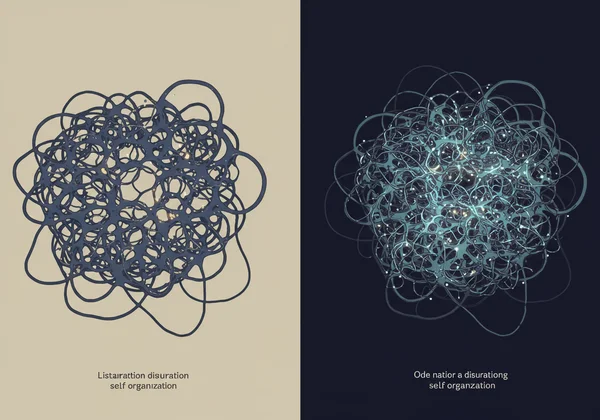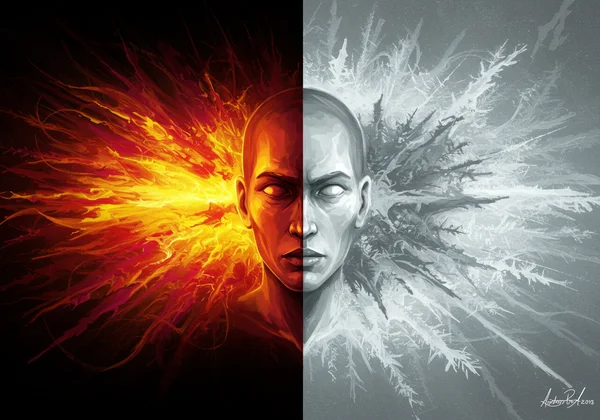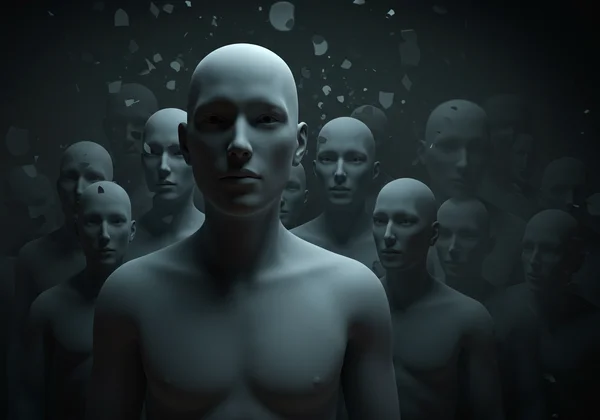Understanding CPTSD: Core Symptom Clusters & DSO Explained
Feeling confused by persistent emotional struggles, self-doubt, or strained relationships that stem from past trauma? You're not alone. While PTSD is widely known, Complex PTSD (CPTSD) presents a unique constellation of challenges that often go "beyond flashbacks." Many people wonder, How can I tell if I have CPTSD? This guide will demystify Complex PTSD by explaining its three core symptom clusters, known as Disturbances in Self-Organization (DSO), as defined by the official ICD-11 criteria. Understanding DSO is your first step towards validating your experiences and finding the clarity you deserve. If these concepts resonate with you, a free cptsd test can be a valuable starting point.
What are Disturbances in Self-Organization (DSO) in CPTSD?
At its heart, Complex PTSD is a response to prolonged or repeated trauma, especially when escape was difficult or impossible, such as in cases of childhood neglect or long-term abuse. While it shares the core symptoms of PTSD (re-experiencing, avoidance, and a sense of threat), CPTSD includes an additional, defining set of symptoms: Disturbances in Self-Organization, or DSO.
DSO refers to the profound ways that chronic trauma can disrupt a person's core sense of self. It impacts how you regulate your emotions, how you see yourself, and how you connect with others. Think of it as the deep, internal wiring that gets scrambled after enduring long-term stress. Recognizing these patterns is crucial for understanding why you feel the way you do.
The ICD-11 Framework: How CPTSD is Officially Defined
It's important to know that CPTSD is an official diagnosis in the World Health Organization's International Classification of Diseases, 11th Revision (ICD-11). This isn't just a popular term; it's a recognized clinical reality. The ICD-11 states that for a CPTSD diagnosis, a person must meet the criteria for PTSD plus show significant impairment in the three areas of DSO. This framework helps distinguish CPTSD from other conditions and validates the unique struggles of its survivors. Gaining a preliminary understanding through a CPTSD self-assessment can help you see how your experiences align with this framework.
Why DSO Goes Beyond Standard PTSD Symptoms
Standard PTSD often arises from a single, terrifying event. The symptoms, while severe, are typically centered on that event. CPTSD, however, stems from a history of trauma that fundamentally shapes personality development. DSO symptoms are the result. They are not just about a past event; they are about who you feel you have become because of that past. This includes persistent feelings of worthlessness, a chronic inability to feel safe with others, and a constant battle with intense emotions. These are the deep wounds that a standard PTSD diagnosis might not fully capture. Many individuals find that taking a CPTSD test provides significant clarity on how these deeper symptoms differentiate their experience from standard PTSD.

Pillar 1: Understanding Emotional Dysregulation
The first pillar of DSO is a persistent difficulty in managing emotions. This isn't just being "moody" or "sensitive." It's a profound challenge that can feel like you're constantly at the mercy of your feelings, unable to find a stable emotional baseline. This often manifests as heightened emotional reactivity or, conversely, emotional numbing.
Navigating Intense Mood Swings and Overwhelming Reactivity
For someone with CPTSD, a small trigger can unleash a tidal wave of emotion. You might experience sudden, intense shifts from anger to despair to anxiety with little warning. These feelings can feel disproportionate to the current situation because they are often connected to unresolved trauma from the past. You might also struggle with "emotional flashbacks," where you feel the intense emotions of your past trauma without a clear visual memory, leaving you feeling terrified or ashamed without knowing why. An online cptsd screening test can help you identify if these patterns are significant.
Hyperarousal, Hypoarousal, and the Freeze Response
Emotional dysregulation also involves the nervous system. Hyperarousal is a state of being "on edge"—feeling constantly anxious, irritable, and jumpy. It's the "fight or flight" response stuck in the "on" position. In contrast, hypoarousal is a state of shutdown—feeling numb, disconnected, empty, or exhausted. This is often linked to the freeze response, a survival mechanism where the body and mind go numb to endure an inescapable threat. If you often find yourself "spacing out" or feeling detached from your body, you may be experiencing this aspect of trauma.

Pillar 2: Negative Self-Concept and Persistent Feelings of Shame
The second pillar of DSO involves a deeply damaged sense of self. Chronic trauma, especially during developmental years, can leave you with a core belief that you are worthless, broken, or fundamentally flawed. This goes far beyond low self-esteem; it is a pervasive and painful identity.
Battling the Inner Critic: Worthlessness, Guilt, and Self-Blame
A hallmark of this pillar is a relentless inner critic. This is an internal voice that constantly judges, shames, and blames you for everything, including the trauma you endured. Survivors of CPTSD often carry a heavy burden of toxic shame and guilt, believing they were somehow responsible for what happened to them. This can lead to self-sabotaging behaviors and a profound sense of being undeserving of happiness or love. A first step towards challenging this voice can be validating your symptoms with a confidential cptsd quiz.
Identity Confusion and a Fragmented Sense of Self
When your sense of self is formed in an environment of trauma, it can become fragmented. You might feel like you don't really know who you are, what you like, or what you believe in. This identity confusion can make you feel empty or like a chameleon, constantly changing to please others or to feel safe. This struggle to maintain a stable, cohesive sense of self is a direct consequence of having your identity development disrupted by trauma.

Pillar 3: Difficulties in Relationships and Interpersonal Trust
The third and final pillar of DSO is severe and persistent problems in relating to others. When the people who were supposed to keep you safe were the source of your pain, it fundamentally damages your ability to trust and form healthy connections.
Cycles of Avoidance, Enmeshment, and Trauma Bonds
Relationship difficulties in CPTSD often manifest in extremes. You might find yourself in a cycle of avoidance, pushing people away to protect yourself from being hurt again. Alternatively, you might fall into patterns of enmeshment, losing your sense of self in a relationship out of a desperate fear of abandonment. Many survivors also find themselves drawn to chaotic or unhealthy relationships that replicate their early trauma dynamics, sometimes known as trauma bonds. Understanding if these patterns are part of your life is a key insight you can gain from a CPTSD test online.
Rebuilding Connection: Addressing Fear of Abandonment and Betrayal
At the root of these relational struggles is a deep-seated fear of others. You may constantly anticipate betrayal or rejection, making it feel impossible to ever truly let your guard down. Building trust can feel like a monumental task. Healing involves learning to set boundaries, recognizing healthy relationship dynamics, and slowly building a sense of safety with trusted individuals. This journey is challenging, but it is absolutely possible. Taking a moment to start a free test can provide a private space for reflection on these deep-seated fears.

Recognizing yourself in the descriptions of Disturbances in Self-Organization can be both painful and incredibly validating. It gives a name to the chaos you've been living with and confirms that your struggles are real and understandable consequences of what you endured. This understanding is a powerful first step on the path toward healing, allowing you to shift from self-blame to self-compassion. If these descriptions resonate deeply with your experiences, taking a scientifically-backed self-assessment can provide invaluable clarity. Discover more about your unique experiences and gain personalized insights – take our free, confidential CPTSD test today.
Disclaimer: This article is for informational purposes only and is not a substitute for professional medical advice, diagnosis, or treatment. The test on our website is a screening tool, not a diagnostic instrument. Please consult with a qualified mental health professional for any health concerns.
Frequently Asked Questions About CPTSD's Core Symptoms
How can I tell if I have CPTSD instead of just PTSD?
The key difference lies in the three pillars of Disturbances in Self-Organization (DSO). While both PTSD and CPTSD involve symptoms like flashbacks and avoidance, CPTSD also includes chronic difficulties with emotional regulation, a negative self-concept (e.g., feelings of worthlessness and shame), and persistent problems in relationships. If your struggles extend deeply into your sense of self and your ability to connect with others, it may indicate challenges related to CPTSD.
What are the 17 symptoms of CPTSD mentioned in the ITQ?
The International Trauma Questionnaire (ITQ) is a self-report measure for ICD-11 PTSD and CPTSD. It covers the core PTSD symptoms (re-experiencing, avoidance, sense of threat) as well as the three DSO clusters. The symptoms are detailed questions about affective dysregulation, negative self-concept (like feeling diminished or worthless), and disturbances in relationships (like feeling distant from others). Our free CPTSD screening is based on the principles of the ITQ to help you assess these areas.
Is CPTSD just borderline personality disorder (BPD)?
No, though they share overlapping symptoms like emotional dysregulation and relationship difficulties. The core distinction is their origin. CPTSD is fundamentally a trauma-related disorder rooted in a history of prolonged trauma. BPD's origins are more complex and while trauma is a significant risk factor, it is not the sole cause. A key differentiator is that the negative self-image in CPTSD is often consistent (e.g., "I am worthless"), whereas in BPD it can be more unstable and chaotic.
Can understanding DSO help me manage my CPTSD symptoms?
Absolutely. Understanding DSO provides a map for your healing journey. By identifying which pillar affects you most, you can target your coping strategies. For example, if emotional dysregulation is a major issue, you can focus on grounding techniques. If a negative self-concept is your biggest challenge, you can work on self-compassion practices. This knowledge empowers you to move beyond confusion and take active, informed steps toward recovery. An ITQ test online can be a great way to start identifying these specific areas.